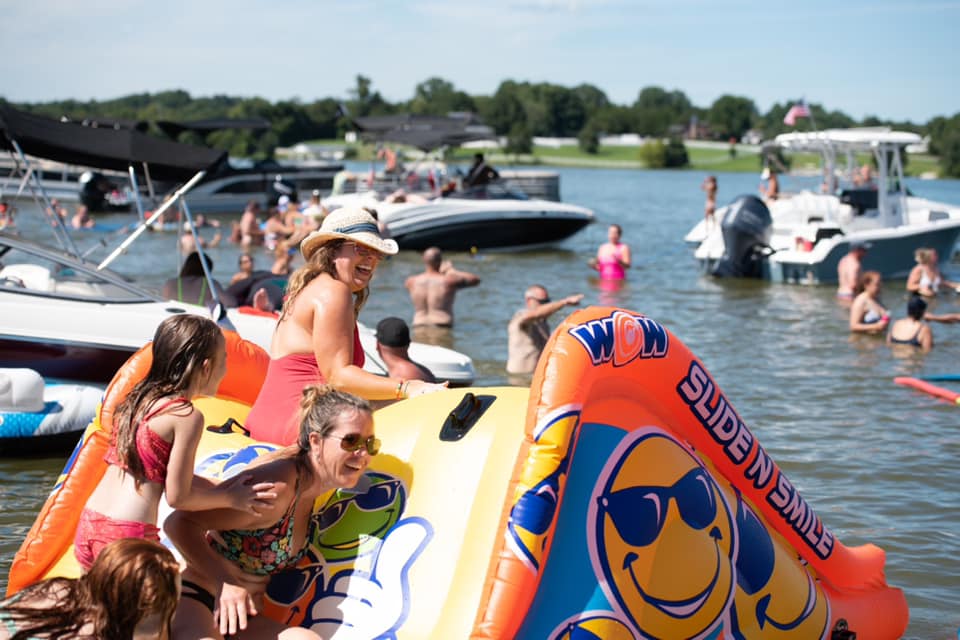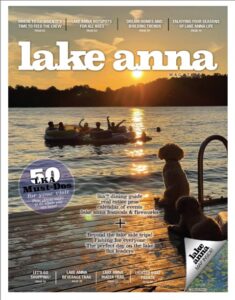As a result of confirmed cases of Shiga toxin-producing Escherichia coli (STEC) infections possibly originating from exposure to Lake Anna, the Virginia Department of Health (VDH) conducted a thorough investigation involving local, state, and federal partners.
People involved in the outbreak visited Lake Anna or were in contact with people that visited Lake Anna area over the Memorial Day weekend. A total of 25 STEC cases were identified, including 12 caused by STEC O157, the most common type of STEC. Among these 25 cases, 23 were in people who visited the lake and two were in people who had close contact with someone with STEC. All 23 people with STEC who visited the lake were at the lake between May 24 and May 27. Most of these people reported visiting an area in the upper North Anna River known as The Sandbar. There were no deaths and seven cases of Hemolytic uremic syndrome (HUS.
No new STEC cases have been found in people who visited the lake after the Memorial Day weekend. Swimming or other activities in any natural body of water always poses some health risk because the water is not disinfected. Some parts of Lake Anna remain under a swimming advisory for harmful algal blooms (HABs). See page 10.
The Virginia Department of Environmental Quality (DEQ) collected water samples from Lake Anna on June 25 from similar areas as their previous collections on June 11 and June 17 (The Sandbar, Cocktail Cove, and Lake Anna State Park). The Virginia Department of Agriculture and Consumer Services (VDACS) collected water samples for STEC testing, with DEQ’s assistance on June 25 from Lake Anna at the same locations. The Department of Consolidated Laboratory Services (DCLS) tested the water samples.
The fecal bacteria results for water samples collected on June 25 were all below levels of concern.
For samples collected on June 25, DCLS used a different test to look for strains of STEC that cause disease. STEC O157 was not found in any of the samples. Genetic material from non-O157 STEC bacteria was identified in The Sandbar and Cocktail Cove samples. This initial test cannot specify if the genetic fragments are from live or dead bacteria. When DCLS did more testing, live bacteria could not be found.
VDH has ended the STEC outbreak investigation on June 28 because they had not identified any new confirmed or probable cases among people who visited Lake Anna on or after the Memorial Day weekend, they do not expect to find new cases associated with the Memorial Day weekend exposure and it is likely that the STEC infections are a result of exposure to lake water over Memorial Day weekend. However, laboratory testing conducted at DCLS was not able to confirm the presence of STEC O157 bacteria in the water samples, therefore is unlikely that VDH will be able to specifically identify the source of bacteria in the water.
Potential sources include environmental pollution from the following: heavy rains, livestock, failing septic systems, boating discharge and swimmers.
VDH conducted enhanced surveillance for STEC through July 17 because of the 4th of July celebrations. This involved monitoring emergency department and urgent care visits for gastrointestinal illnesses and STEC. No reports were received.
DEQ will continue their routine monitoring of Lake Anna that occurs each year between April and October. This includes testing for fecal E. coli bacteria, but not STEC.
E. coli are bacteria that normally live in the intestines of humans and animals, such as cows. Most strains of E. coli are harmless. Some strains can produce toxins that make people sick. These harmful strains are called Shiga Toxin-Producing E. coli or STEC. The most common type of STEC is E. coli O157:H7.
Lake Anna Civic Association (LACA) also conducts routine water quality monitoring. See LACA’s Water Quality (WQ) and Cyanobacteria Data website for more information on their water quality program and test results.
























